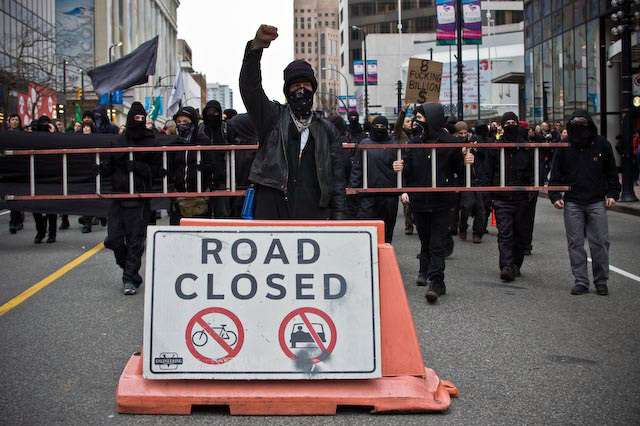
Autonomia, Autonomen, or autonomists have been the names used for various popular social change and countercultural movements in Italy, Germany, Denmark, Holland and other parts of Europe in the last 3 decades. All these different movements have sought to radically oppose authority, domination and violence anywhere that they exist in contemporary life (which is pretty much everywhere). Autonomy in this case does not mean some kind of regional superiority complex or isolationism, as with statist nationalism, nor does it mean individual autonomy at the expense of the majority, as is the basis of capitalism. What autonomists value and desire is the freedom for individuals to choose others with whom they share an affinity, and band together with them to survive and fulfill all of their needs and desires collectively, without interference from greedy, violent individuals or huge inhuman bureaucracies.
The first so-called autonomists were those individuals involved in the Italian Autonomia movement that got its start during the Hot Autumn of 1969, a time of intense social unrest. Throughout the 1970s in Italy a widespread movement for total social change was initiated by autonomous groups of factory workers, women and students. Capitalists, labor unions and the statist Communist Party bureaucracy had nothing to do with this movement, and in fact worked hard to repress and stop it. Yet the power structure was often at a loss with how to deal with the near complete refusal of large areas of the population to obey the rules and orders of authority.
Despite the rapid proliferation of direct action, strikes, rent strikes, mass squats, streetfighting, university occupations and other popularly supported radical actions during the 1970s, the Italian movement eventually subsided. This was partly due to violent attacks, imprisonment and murders of radicals by the police and the Communist party-controlled central government. At the same time the response to this escalation of state violence was often an escalation of terrorism by elite radical urban guerilla groups . This self-defensive terrorism often served to turn people away from a large scale, public social change movement. Some chose to become more militant and secretive, while others abandoned politics all together for a seemingly more peaceful life of obedience to authority.
via: ainfos.ca
Part A Hardline Oppression, Militant Resistance, And the Origins of the BLACK BLOCK
Part B Autonomen BLACK BLOCK Accomplishments
